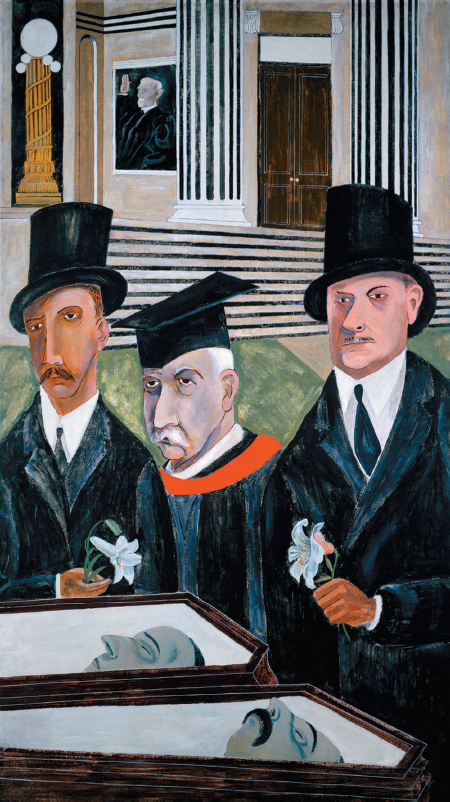The Red Scare

Many well-off Americans sided with management in the upheavals of the postwar years. They blamed workers for the rapidly rising cost of living, which jumped nearly 80 percent between 1917 and 1919. The socialist views of some recent immigrants frightened native-born citizens; communism terrified them. When in 1919 the Soviet Union’s new Bolshevik leaders founded the Third International, intended to foster revolutions abroad, some Americans began to fear that dangerous radicals were hiding everywhere. Wartime hatred of Germans was replaced by hostility toward Bolsheviks (labeled “Reds,” after the color of communist flags). Ironically, American communists remained few in number and had little political influence. Of the 50 million adults in the United States in 1920, no more than 70,000 belonged to either the fledgling U.S. Communist Party or the Communist Labor Party.
In April 1919, alert postal workers discovered and defused thirty-four mail bombs addressed to government officials. In June, a bomb detonated outside the Washington town house of recently appointed attorney general A. Mitchell Palmer. Palmer escaped unharmed, but he used the incident to fan public fears, precipitating a hysterical Red Scare. With President Woodrow Wilson incapacitated by stroke, Palmer had a free hand. He set up an antiradicalism division in the Justice Department and appointed his assistant J. Edgar Hoover to direct it; shortly afterward, it became the Federal Bureau of Investigation (FBI). In November 1919, Palmer’s agents stormed the headquarters of radical organizations. The dragnet captured thousands of aliens who had committed no crimes but who held anarchist or revolutionary beliefs. Lacking the protection of U.S. citizenship, many were deported without indictment or trial.
The Palmer raids peaked on a notorious night in January 1920, when federal agents invaded homes and meeting halls, arrested six thousand citizens and aliens, and denied the prisoners access to legal counsel. Then Palmer, who had presidential ambitions, overreached. He predicted that on May 1 a radical conspiracy would attempt to overthrow the U.S. government. State militia and police went on twenty-four-hour alert to guard against the alleged threat, but not a single incident occurred. As the summer of 1920 passed without major strikes or renewed bombings, the Red Scare began to abate.
Like other postwar legacies, however, antiradicalism had broad, long-lasting effects. In May 1920, at the height of the Red Scare, police arrested Nicola Sacco, a shoemaker, and Bartolomeo Vanzetti, a fish peddler, for the murder of two men during a robbery of a shoe company in South Braintree, Massachusetts. Sacco and Vanzetti were Italian aliens and self-proclaimed anarchists who had evaded the draft. Convicted of the murders, Sacco and Vanzetti sat in jail for six years while supporters appealed their verdicts. In 1927, Judge Webster Thayer denied a motion for a new trial and sentenced them to death. Scholars still debate their guilt or innocence. But the case was clearly biased by prosecutors’ emphasis on their ties to radical groups. The execution of Sacco and Vanzetti was one of the ugly scars left by the ethnic and political hostilities of the Great War.
PLACE EVENTS IN CONTEXT